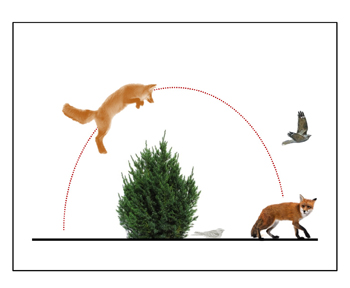Linear developments, such as roads, firebreaks, and railways, provide a stark juxtaposition of different habitats with contrasting associated predation risks, thus potentially influencing predator–prey interactions. However, empirical evidence is still very limited. The effect of fox abundance and that of their main prey, the European rabbit, on habitat selection by an alternative prey, the red-necked nightjar, was studied in a road network crossing the Doñana Natural Space. Nightjars generally forage on the same roads used by foxes to search for alternative prey when rabbits are scarce and, as a result, predation risk for nightjars may vary over time. Contrary to expectations, nightjars continued foraging on roads when foxes were most abundant, yet they behaved more cautiously. During risky periods, nightjars perched nearby tall roadside cover, which is known to functions as a protective barrier against fox attacks. Conversely, when predation risk decreased, nightjars shifted to safer microsites near short plants, further away from the roadside. This study shows how nightjar plasticity in microhabitat selection allows them to forage even in areas where predators are abundant, and highlights the important role that linear structures may play in interspecific interactions. informacion[at]ebd.csic.es: Camacho et el (2017) Nightjars, rabbits, and foxes interact on unpaved roads: spatial use of a secondary prey in a shared-predator system. Ecosphere DOI: 10.1002/ecs2.1611
http://onlinelibrary.wiley.com/doi/10.1002/ecs2.1611/full








 Las altas temperaturas están provocando que las lagunas y las marismas de Doñana pierdan agua rápidamente
Las altas temperaturas están provocando que las lagunas y las marismas de Doñana pierdan agua rápidamente



